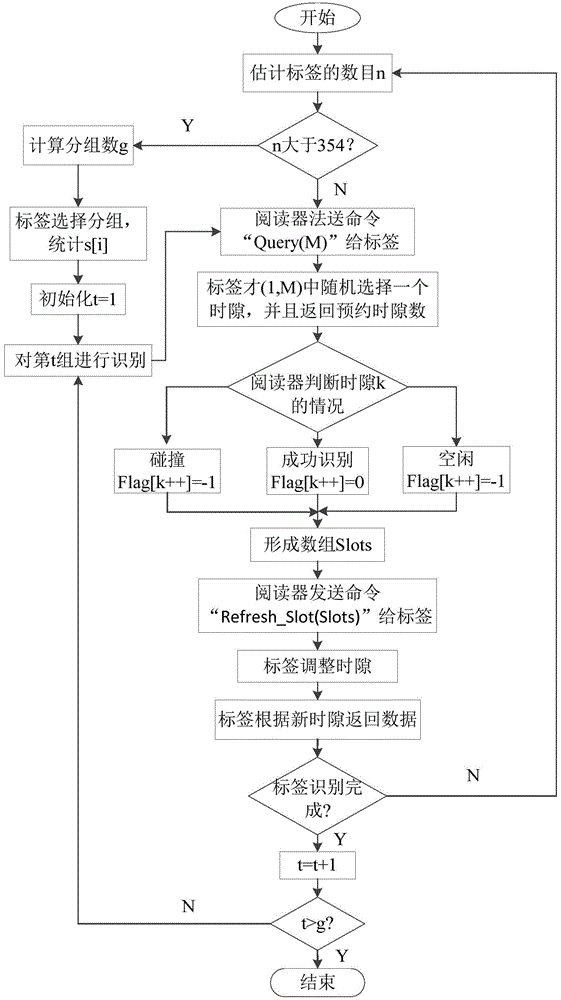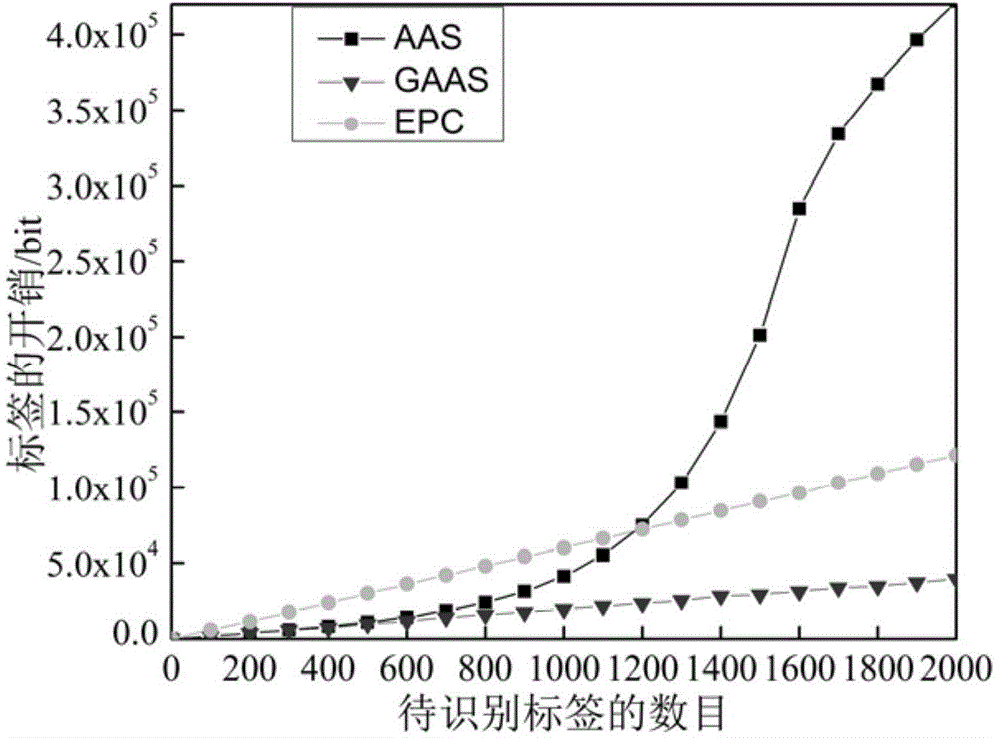RFID (radio frequency identification) anti-collision method based on GASS (grouped adaptive allocating slots)
A technology of allocating time slots and anti-collision algorithms, which is applied in the field of multi-tag reading and can solve problems such as multi-tag anti-collision
- Summary
- Abstract
- Description
- Claims
- Application Information
AI Technical Summary
Problems solved by technology
Method used
Image
Examples
Embodiment Construction
[0078] The present invention includes three stages of tag number estimation and grouping stage, time slot processing stage, and tag identification stage. The specific process is as follows:
[0079] (1) Label number estimation and grouping stage
[0080] i At the beginning of recognition, use the Vogt algorithm to estimate the number n of labels to be recognized;
[0081] ii When the number of labels is less than 354, adopt the dynamic frame time slot strategy, dynamically adjust the length M of the identification frame, and directly enter the time slot processing stage; when n is greater than 354, the labels need to be grouped, and the grouping is obtained from Table 2 number g;
[0082] iii The label randomly selects a number i between 1 and g as its own group number, and at the same time increases the value of s[t] by 1 to record the number of labels in this group;
[0083] iv Initialize the currently recognized group number t=1, and start to recognize the tth group.
[...
PUM
 Login to View More
Login to View More Abstract
Description
Claims
Application Information
 Login to View More
Login to View More - R&D
- Intellectual Property
- Life Sciences
- Materials
- Tech Scout
- Unparalleled Data Quality
- Higher Quality Content
- 60% Fewer Hallucinations
Browse by: Latest US Patents, China's latest patents, Technical Efficacy Thesaurus, Application Domain, Technology Topic, Popular Technical Reports.
© 2025 PatSnap. All rights reserved.Legal|Privacy policy|Modern Slavery Act Transparency Statement|Sitemap|About US| Contact US: help@patsnap.com



